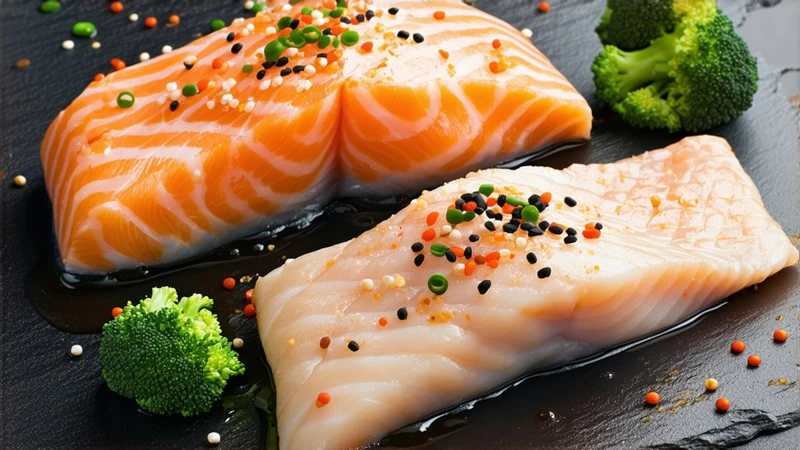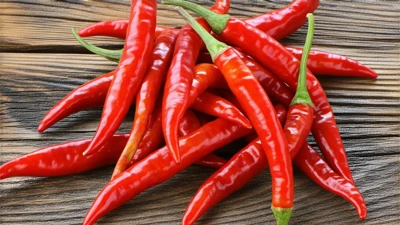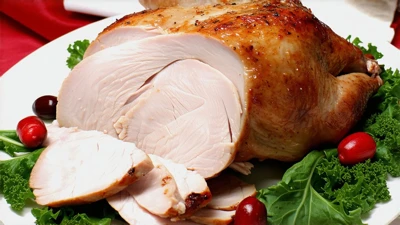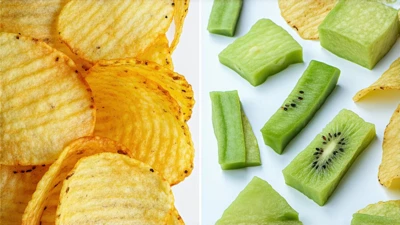
Fish Filet vs. Chick Breast: The Great Protein Showdown
Fish filet and chicken breast are among the most consumed sources of high-quality protein in the American household. Both are lean, versatile and nutrient-rich — but which one really rules? In this data-driven breakdown, we're positioning these proteins against one another in 10 key categories, from nutritional profiles to sustainability, to help you figure out which fits your dietary goals.
Nutritional Comparison: A Deep Dive into the Macros
Let's break it down by the basics: protein, calories and fats. The table below summarizes the main differences per 100g serving (raw):
| Nutrient | Chicken Breast | Salmon Filet | Cod Filet |
|---|---|---|---|
| Protein | 31g | 20g | 18g |
| Calories | 165 kcal | 208 kcal | 82 kcal |
| Total Fat | 3.6g | 13g | 0.7g |
| Saturated Fat | 1g | 2.5g | 0.1g |
| Omega-3s | 0.02g | 2.3g | 0.2g |
| Cholesterol | 85mg | 55mg | 43mg |
| Vitamin D | 0.5 IU | 526 IU | 0.9 IU |
Data Source: USDA FoodData Central (2023)
Key Takeaways:
For pure protein-density, chicken breast wins out, boasting 31g protein per 100g — perfect for muscle repair.
Fatty fish, such as salmon, offer omega-3 fatty acids (2.3g per portion) that help brain and heart health.
Cod is the lowest-calorie choice, but it doesn't have the nutrient density of salmon or chicken.
The macronutrients are one of the health benefits.
Both proteins have unique health benefits:
Cardiovascular health: Omega-3s in salmon increase blood fat levels and decrease inflammation for a 15–30% reduced risk of cardiovascular disease (American Heart Association, 2022).
Weight Maintenance: Chicken is rich in protein and low calories (165 kcal/100g), which can help you feel full and aid weight loss.
Bone health: Chicken's vitamin B6 and B12 support metabolism, and salmon's vitamin D aids calcium absorption.
Personal Opinion: I tend to gravitate toward salmon for the omega-3s, but I have chicken around for cheap, fast meals.
Benefits: Cost efficiency, Sustainability and Adaptability
Cost Comparison (US Average Retail Prices):
| Protein | Price per Pound | Servings per Pound | Cost per Serving |
|---|---|---|---|
| Chicken Breast | $3.99 | 4 | $1.00 |
| Salmon Filet | $8.99 | 3 | $3.00 |
| Cod Filet | $5.49 | 4 | $1.37 |
Source: Bureau of Labor Statistics (2023)
Sustainability:
Chicken: Needs 1,500 gallons of water per pound (compared with 1,800 for farmed salmon). But industrial poultry farming raises concerns about antibiotic resistance.
Fish: "Best Choice": Wild-caught Alaskan salmon (NOAA Fisheries); farmed shrimp and tilapia often damage ecosystems.
Verdict: Chicken is less expensive and easier to come by, but if you're sourcing ethically, it's worth it for both.
Culinary Aspect of Flavor & Texture
Chicken Breast: Mild flavor that goes great with strong spices (like paprika, garlic). Its sturdy texture stands up to grilling and shredding.
Fish Filet: Tender, flaky texture excels in tacos or ceviche. Fatty fish such as salmon provide umami richness.
Cultural note: Fish is favored in coastal regions (including the Pacific Northwest), and chicken rules Southern comfort food.
However, keep in mind your audience & lifestyle
Fitness Enthusiasts: The protein in chicken aids muscle recovery.
Seniors: Soft-textured fish makes for lesser chewing.
Pregnancy: Skip the high-mercury fish (swordfish), but enjoy low-mercury fish, like salmon or chicken.
Practical Tips: Storing It, Allergies, Recipes
Prep Time: Fish cooks in 10–15 minutes (compared with 25–30 for baked chicken).
Allergies: 2% of Americans are allergic to shellfish (AAAAI), but poultry allergies are uncommon.
Recipe Ideas: Blackened chicken stir-fry; lemon-herb salmon bowls.
The Bottom Line: Which Is Right for You?
Protein First: Buy chicken breast.
Heart Health & Sustainability: Wild-caught salmon
Do Both: Alternate releases weekly for maximum nutrition.
Final note: I hang out in chicken land with a busy mom's weekly rotating cast of characters for weeknight dinners, and then switch to salmon hook for weekend fare. If you care about nutrition, taste, or ethics, it's just a matter of prioritizing, though. Both deserve a place in a balanced diet.
Data Sources:
USDA FoodData Central
American Heart Association
NOAA Fisheries
AAAAI (American Academy of Allergy, Asthma & Immunology)
Liked this article? Send it to your fitness-obsessed friend or your foodie cousin!

















